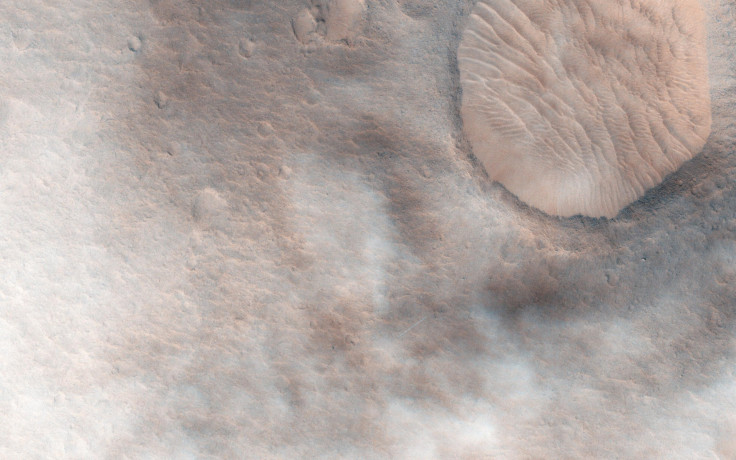Mars’ Massive Upcoming Dust Storm Will Show Scientists Why Planet Is So Dead

Scientists are waiting for a massive dust storm on Mars so they can figure out why Earth’s neighbor is a wasteland.
They think the kind of humongous dust storm that cloaks the whole of the Martian sky in darkness would give them clues about how Mars lost so much of its atmosphere over its lifetime. And understanding how gases escaped Mars would tell astronomers how the Red Planet transformed from the warm and wet world scientists believe it once was into the dry and barren orb we see today.
“Present-day water loss from Mars provides insight into Mars’ past habitability,” according to a study in the journal Nature Astronomy.
Scientists don’t know exactly when the next one will strike. But during a global dust storm more than a decade ago, NASA’s Mars Reconnaissance Orbiter collected data that showed the storms might have something to do with gases like hydrogen escaping from the planet’s atmosphere, the University of Colorado Boulder explained.
“We found there’s an increase in water vapor in the middle atmosphere in connection with dust storms,” lead study author Nicholas Heavens said in the university statement. “Water vapor is carried up with the same air mass rising with the dust.”
That water vapor rises a few dozen miles into the air during an enormous dust storm and hydrogen gas escapes into space from the top of the Martian atmosphere.
“The transport of water vapor and ice to the middle atmosphere by deep convection in Martian dust storms can enhance hydrogen escape,” the study explained. The more intense the storm, the greater this effect — hence why a global dust storm could reveal so much information.
Mars has “regional” dust storms in the spring and summer in the northern hemisphere. Occasionally, a regional storm grows into a global one, with the last one occurring in 2007.
If another one were to pick up and engulf Mars, NASA’s orbiter would be able to measure water vapor, dust and ice in the atmosphere to boost the data scientists already have on water vapor rising through the air during the storms and hydrogen escaping.
The observations can unlock new models of what Mars looked like through its history.
“What would the climate have been like when the atmosphere was thicker?” study co-author Michael Chaffin said in the CU statement. “Perhaps not as dry, but perhaps windier. We can’t really say whether there would have been more dust storms or what their effect on loss of gas from the atmosphere would have been during those earlier conditions. A good way to improve our understanding about dust storms on ancient Mars would be to get more observations during a global dust storm on today’s Mars.”
© Copyright IBTimes 2024. All rights reserved.





















